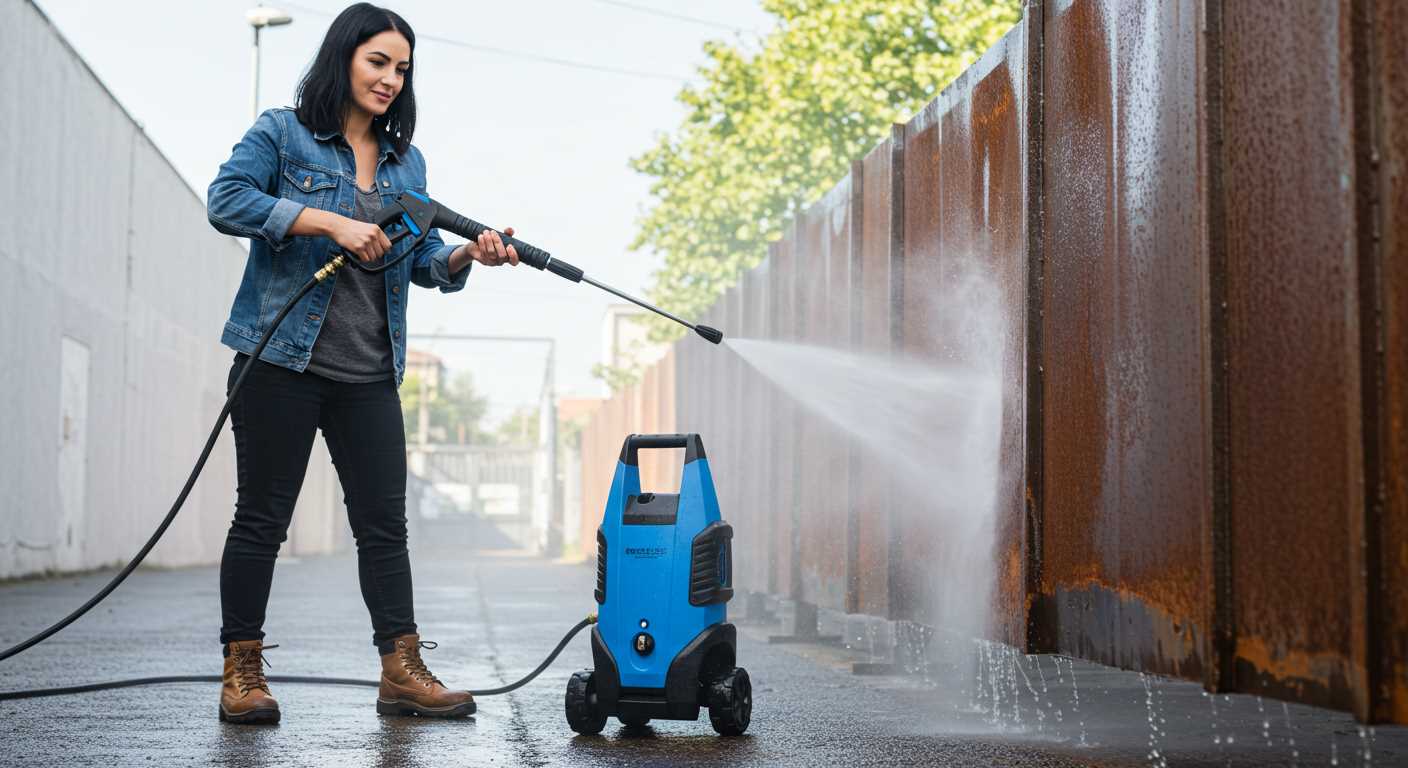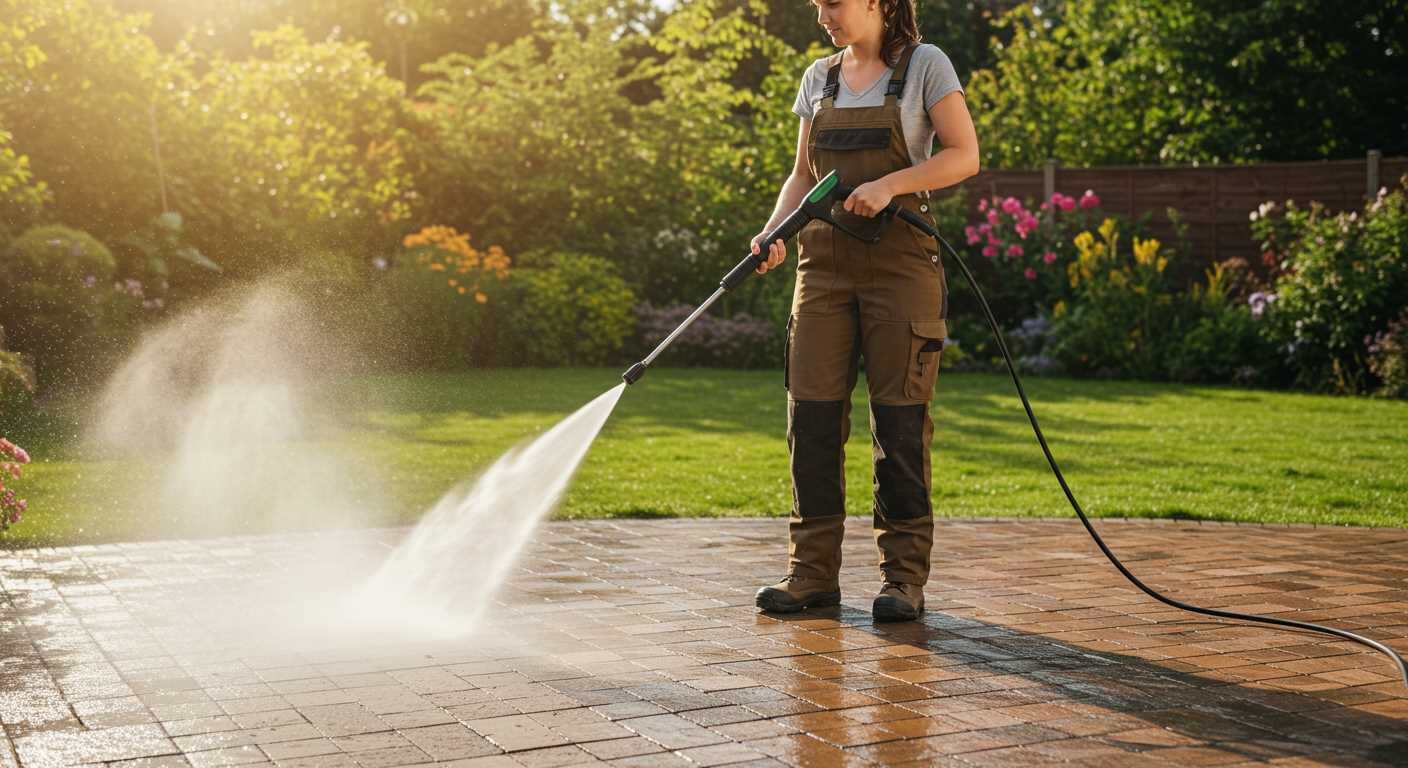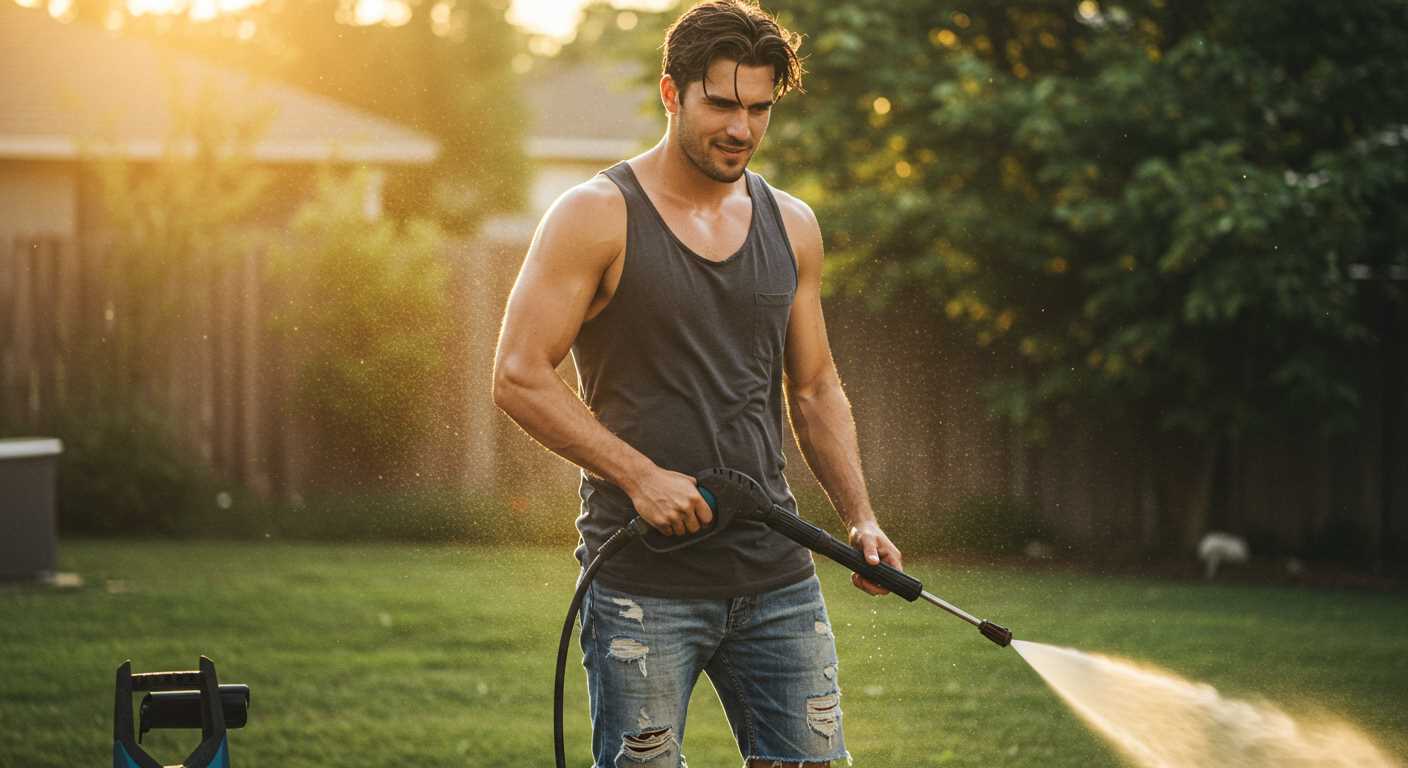



For those seeking clarity on the functioning of high-pressure cleaning units, I’ve found that breaking down the components and processes offers the best insights. The core principle involves the utilisation of a motor that drives a water pump, generating a concentrated stream capable of dislodging dirt and grime from various surfaces.
The motor, often electric or petrol-powered, activates the pump. This pump draws water from a source and amplifies its pressure. It’s fascinating how models differ, but in essence, most will elevate water to pressures ranging from 1000 to 4000 PSI. This sheer force effectively removes stubborn stains, whether from driveways, decks, or vehicles.
A significant aspect lies in the nozzle design. Various nozzles adjust the spray pattern and pressure, allowing for customisation based on the task at hand. Whether using a wide fan for gentle cleaning or a pinpoint stream for tough spots, these attachments are vital for maximising efficiency and protecting surfaces from damage.
Moreover, the introduction of detergents can enhance cleaning capabilities. Many units allow for the application of soap through dedicated tanks or siphon setups, further improving results on heavily soiled areas. Understanding the right combination of pressure, water flow, and chemicals can dramatically elevate the cleaning outcome.
Understanding the Components of a Pressure Washer

Each unit’s efficiency and functionality hinge on several key components, all of which work together seamlessly. To ensure optimal performance, familiarise yourself with the main parts that contribute to a machine’s effectiveness in removing dirt and grime.
Motor and Pump

The motor, often electric or petrol, powers the machine, while the pump takes centre stage in building up the necessary force. Look for units with axial or triplex pumps, as they offer durability and consistent water pressure. A solid pump can drastically enhance cleaning results, so investing in quality here pays off.
Nozzle Selection
Nozzles are crucial for adjusting the spray pattern and pressure. There are typically five different types: 0°, 15°, 25°, 40°, and soap nozzles. Each serves a distinct purpose; narrower sprays provide intense cleaning for tough stains, while wider patterns are better for softer surfaces. Ensuring you’re using the right nozzle for each task is pivotal in achieving desired results efficiently.
The Role of the Motor in Creating Pressure
The motor is the powerhouse of any cleaning device. Its primary function is to convert electrical energy into mechanical energy, which drives the pump. Selecting an apparatus with an appropriate motor is critical for achieving optimal functioning.
A more powerful motor results in greater water flow and pressure. Generally, motors are rated in horsepower (HP) or watts; higher ratings typically indicate a stronger motor that can generate increased pressure. For residential tasks, motors ranging from 1.5 HP to 2.5 HP are standard and suffice for most cleaning needs.
The design and type of motor also play significant roles in the overall performance. Induction motors, for instance, are more durable and quieter compared to universal types. They are less susceptible to overheating, making them suitable for extended use without significant performance drops.
Another factor is the motor speed, which influences how quickly the pump can build pressure. Motors with higher revolutions per minute (RPM) can thus accelerate pressure creation, beneficial for tackling stubborn grime. It is advisable to match the motor speed with the intended applications to attain satisfactory outcomes.
When assessing the suitability of a motor, consider how it interacts with the pump. A well-matched motor and pump combination ensures smooth operation and longevity of the unit. I recommend looking for models that detail their motor specifications, as this insight can help predict performance and reliability.
How Water is Pressurised in the System

In my extensive experience with cleaning equipment, I’ve found that the pressurisation of water within a system is a critical aspect in delivering effective cleaning solutions. It primarily involves the interplay of several components, including the pump, inlet, and outlet mechanisms.
The pump acts as the heart of the system, creating the necessary force to elevate water pressure. As water enters through the inlet, it is drawn into the pump chamber. The pump uses various methods, such as centrifugal action or positive displacement, to increase the water’s velocity and pressure simultaneously.
As the water moves through the pump, it is compressed within a confined space. The reduction in space increases the water’s velocity, leading to a significant rise in pressure. This high-pressure water is then directed through the outlet, which typically includes a nozzle for optimal performance.
The nozzle is essential as it further concentrates the flow, allowing for an even higher output pressure upon release. Many nozzles come with adjustable settings that permit users to modify the spray pattern and force according to the specific task at hand.
It is also important to note the role of the unloader valve. This component helps to regulate the pressure by diverting excess water back to the inlet when the desired pressure is reached, thus preventing damage to the system.
Maintenance plays a pivotal part in ensuring the system functions correctly. Regular checks on the pump, seals, and connections reduce the risk of leaks and inefficiencies, thereby maintaining optimal water pressurisation. In summary, understanding the mechanics of how water is pressurised enhances not only the cleaning performance but also the longevity of the equipment.
Techniques for Controlling Water Flow and Pressure

For optimal results with any cleaning machine, adjustments to water flow and force play a vital role. Here are critical techniques based on my extensive experience.
Utilise adjustable nozzles to manipulate the spray pattern. This allows for precision in cleaning different surfaces. For instance, a narrower spray delivers higher force for tough stains, while a wider pattern is ideal for more delicate surfaces.
Employ pressure regulators. Many machines come equipped with these features, enabling users to set a desired level of intensity. Dial it down for less durable materials, lest you inflict damage.
Alternate between different detergent injectors. Certain formulations mix with water to enhance cleaning power. It’s essential to select the right one for the task, as using the wrong type can impede flow and effectiveness.
| Technique | Description | Best Use Cases |
|---|---|---|
| Adjustable Nozzles | Change spray width and force | Various surfaces: tough stains vs. delicate materials |
| Pressure Regulators | Set desired water intensity | Sensitive items to prevent damage |
| Detergent Injectors | Mix cleaning solutions with water | Stubborn dirt and grime |
Monitor your water supply. Ensure that your source provides consistent flow. Inadequate supply can lead to fluctuating performance. Additionally, long hoses may decrease force; keep lengths manageable when possible.
Regularly inspect seals and connections. Leaks in the system can result in ineffective usage and water wastage, ultimately impacting performance.
Lastly, time your usage. Extended operation under high settings can overheat components. Understand the limitations of your equipment to avoid malfunction and prolong its lifespan.
Types of Nozzles and Their Impact on Cleaning
Each nozzle brings a distinct approach to the task, influencing effectiveness and efficiency. Selecting the right type can save time while optimizing results. Common options include fan nozzles, turbo nozzles, and specialty nozzles.
Fan nozzles, available in varying degrees (0°, 15°, 25°, and 40°), create a wider spray pattern. A 0° nozzle applies concentrated force, ideal for stubborn stains on hard surfaces. In contrast, a 40° variant disperses water over a broader area, best for gentle cleaning on delicate materials like wood or vehicles.
Turbo nozzles combine the power of a pinpoint stream with the coverage of a fan pattern. They rotate during operation, providing enhanced cleaning without requiring additional passes. This type is particularly useful for heavily soiled areas, making it a valuable tool for tough outdoor tasks.
Specialty nozzles address specific applications. Surface cleaners are perfect for large flat areas, while soap nozzles ensure proper detergent application. Choosing the right accessory for the job can greatly enhance efficiency, ensuring the cleaning process is thorough and effective.
Consider the surface and the type of dirt when selecting a nozzle. For thick grime, opt for a tighter spray; for lighter cleaning tasks, a wider fan pattern suffices. By matching the nozzle to the surface and soil type, the cleaning outcome significantly improves.
In summary, understanding the various types of nozzles empowers users to tackle cleaning tasks with confidence. The right choice leads to enhanced results and reduces the effort required for effective cleaning.
Safety Measures to Consider While Using a Pressure Cleaner
Wearing the right protective gear is non-negotiable. Always equip yourself with safety goggles, gloves, and sturdy footwear to shield against debris and high-velocity water jets.
Secure the area before starting your machine. Remove any obstacles, including children and pets, to prevent accidents. Inform others in the vicinity about your cleaning activity.
Check the equipment for any signs of wear or damage. Inspect hoses for leaks, cracks, or loose connections before use. A thorough examination can prevent potential failures during operation.
Maintain a proper distance from surfaces. Typically, a distance of at least 2 feet is advisable to avoid physical damage to painted or delicate surfaces. Adjust your aim to avoid directing the stream towards yourself or bystanders.
Always follow the manufacturer’s instructions for operational procedures. Each model has specific guidelines that ensure optimal performance and safety.
Use the right detergent specifically designed for your cleaning unit. Household cleaners can create harmful reactions or damage essential components.
Keep the power source away from wet surfaces. If you’re using an electric version, ensure that the extension cord is rated for outdoor use and avoid puddles.
Be aware of your surroundings. Watch for electrical lines, and avoid using the machine in proximity to them. Heightened caution is necessary when working on elevated surfaces.
After completing the cleaning task, disconnect the machine from the power source and release any built-up pressure by pulling the trigger after turning off the water supply.
Storing your equipment properly extends its life. Ensure cleanliness and dry components before storage to prevent mildew and corrosion.
FAQ:
What components make up a pressure washer?
A pressure washer typically consists of a few key components: an electric or petrol engine that powers the pump, a high-pressure pump that increases the water pressure, a trigger gun that allows the user to control the water flow, and various nozzles that can alter the spray pattern. Additionally, there are hoses that connect these parts and carry the water at high pressures to the desired area.
How does the water pressure in a pressure washer get generated?
The process starts when water enters the pressure washer through a garden hose. The engine drives the pump, which draws in the water and forces it through a narrow nozzle at high pressure. This pressure is what makes it possible to remove grime, dirt, and other substances effectively. The pump’s design is crucial, as it determines the overall pressure and flow rate of the water being discharged.
Why is the nozzle important in a pressure washer?
The nozzle plays a significant role in determining the shape and intensity of the water spray. Different nozzles can produce various spray patterns, such as a wide fan spray for gentle cleaning or a concentrated jet for tougher stains. Choosing the right nozzle for the task is important to ensure proper cleaning without damaging the surface being cleaned. For instance, a 0-degree nozzle delivers a precise and powerful stream, ideal for heavy-duty cleaning, while a 40-degree nozzle is better suited for delicate surfaces.
Can I use a pressure washer for various cleaning tasks?
Yes, a pressure washer is quite versatile and can be used for a range of cleaning tasks. Common uses include cleaning driveways, patios, vehicles, garden furniture, and even siding on houses. However, it is crucial to adjust the pressure and nozzles according to the specific task to prevent damage to surfaces, especially with softer materials like wood or painted surfaces where high pressure could strip away finishes.
What safety precautions should I take when using a pressure washer?
Safety is paramount when using a pressure washer. Always wear protective gear such as goggles and gloves to shield yourself from debris and high-pressure water. Ensure you have a secure footing and keep bystanders at a safe distance. Avoid directing the spray at yourself, others, or animals, and never use the washer on electrical appliances or wiring. It’s also advisable to read the manufacturer’s instructions carefully before operating the machine to understand its limitations and safe operation protocols.









